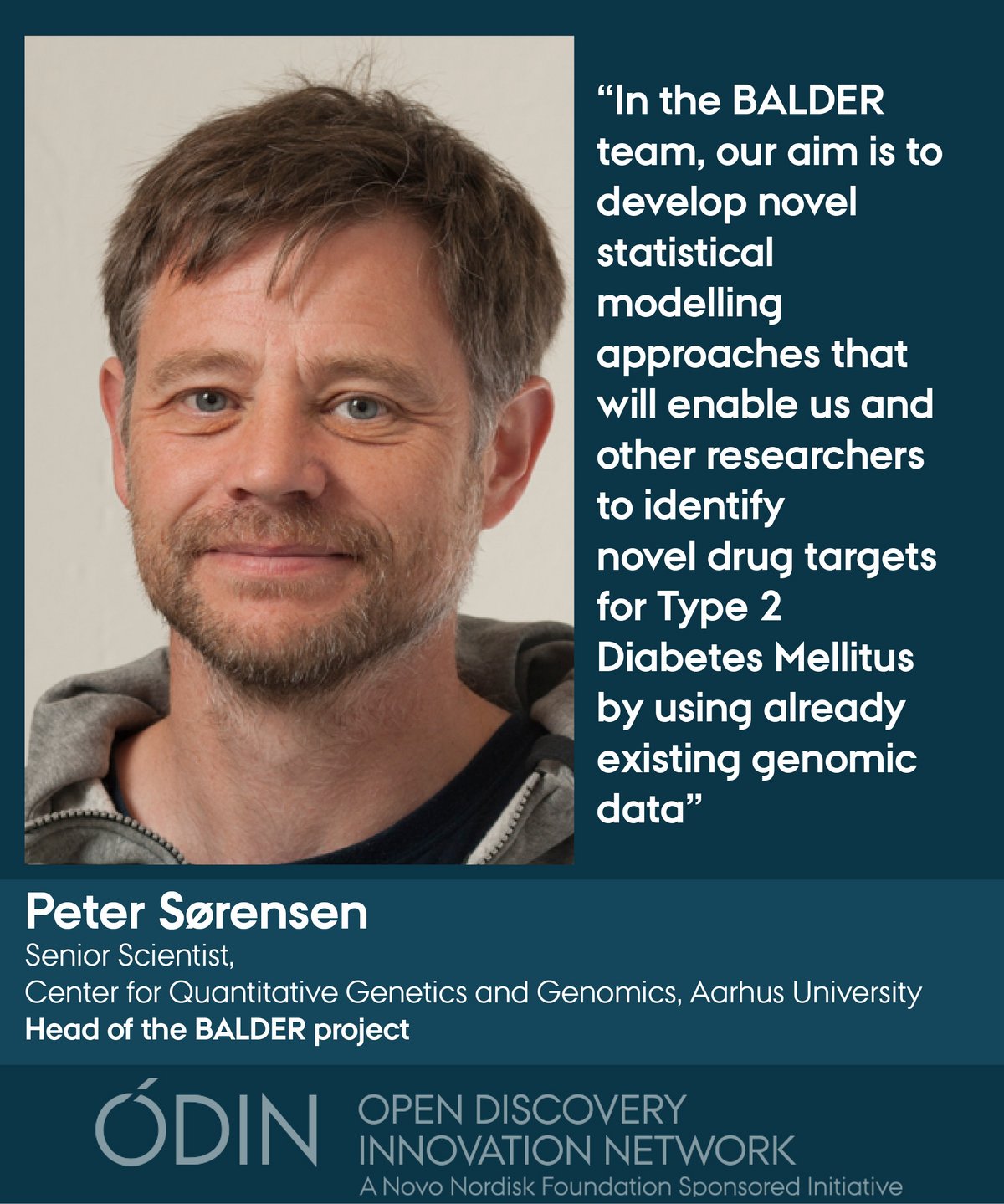Aim of the BALDER project
The BALDER team will develop statistical modelling approaches to identify novel drug targets for Type 2 Diabetes. The AU team will collaborate in an open setting with researchers from Novo Nordisk.

Bayesian AnaLysis of Diabetes for Enhanced biomarkeR and drug target (BALDER)
Type 2 Diabetes is a common disease with a prevalence in Denmark of 250.000 diagnosed patients.
Genetic variants associated with Type 2 Diabetes currently only explain 3% of the disease risk. Increased power to detect variants is mainly obtained by increasing sample size, or – as the team propose – better use of existing data. The BALDER team will increase detection power by developing a multitrait and multi-component Bayesian Linear Regression (MT-BLR) model that combine information on multiple correlated traits and information on groups of genetic variants located within functional units (e.g., pathways).
This modelling approach allow better use of existing data such as functional marker information in biological databases, and availability of large independently collected genotype and phenotype data sets for a range of diseases, including Type 2 Diabetes. The team will use these existing data to develop statistical models that better use information on correlated traits and disease for detecting genetic signals underlying Type 2 Diabetes. While the focus in this project is on improving the drug target discovery process, the team’s modelling approach can also be used for developing more accurate genetic risk predictors for complex diseases.
Participants:
AU: Peter Sørensen, Center for Quantitative Genetics and Genomics
AU: Mads Fuglsang Kjølby, Department of Biomedicine, Department of Clinical Pharmacology and Steno Diabetes Center, Aarhus University Hospital.
Novo Nordisk Research Centre Oxford: Dr. Joanna Howson, Senior Director Genetics
